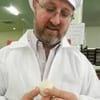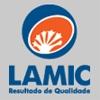Explore all the information on
Mycotoxins in poultry
Common mycotoxins associated with mycotoxicoses in poultry include aflatoxins, fumonisins, zearalenone, ochratoxins, and trichothecenes such as deoxynivalenol and T-2 toxins. Diagnosis requires detection and quantification of the specific mycotoxin. Treatment includes removal of the source of the mycotoxin and supportive care. Mold mitigation strategies can be used for prevention. Mycotoxicoses are diseases caused by the poisonous effects of the toxins produced by filamentous microfungi (ie, toxigenic molds). Hundreds of mycotoxins are known and can produce mild to severe toxic effects when they occur above levels of concern. The importance of mycotoxin problems in poultry is probably considerable yet difficult to measure. Chronic low levels of exposure to more than one type of mycotoxin appears to be a commonality, yet is less clinically evident.
Comments related to #Mycotoxins in poultry
Top 10 content about #Mycotoxins in poultry
























